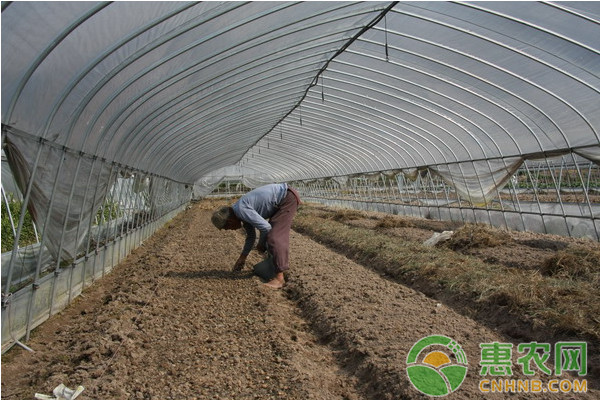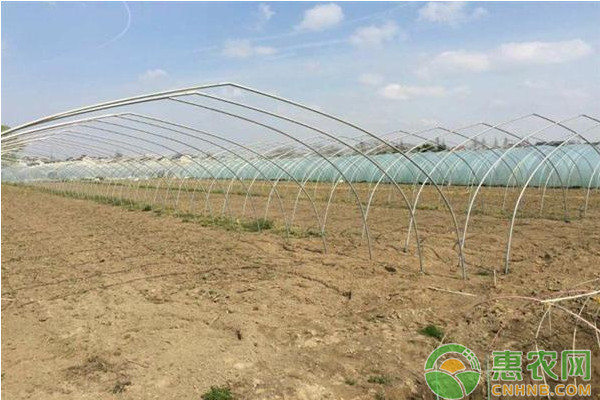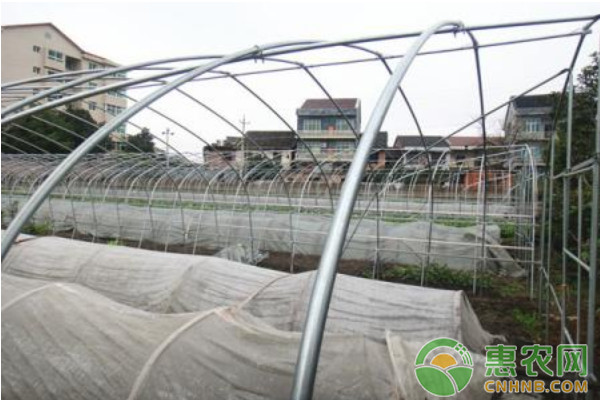Talking about the Cultivation Techniques of Greenhouse Vegetables in Autumn and Winter
In recent years, there are more and more people planting greenhouse vegetables in China. The high-yield cultivation techniques of greenhouse vegetables have been greatly developed, and the economic income of farmers has been improved. Let's talk about the high-yield cultivation techniques of greenhouse vegetables in autumn and winter.

1 variety selection
In the high-yield cultivation techniques of greenhouse vegetables, the selection of varieties is extremely important, and it is the basis for obtaining high yield and high efficiency. In the process of cultivating vegetables in autumn and winter, the following characteristics should be selected, and the disease resistance is good; the tolerance is strong; the quality and high yield are at the same time, and the sowing date should be determined according to the fertility characteristics of the selected varieties.
2 seed treatment
2.1 soaking in warm soup
Just before planting, choose a sunny weather to dilute the seeds and let them dry in the sun for a period of time, usually around 3 hours. The seeds are then stirred and poured into warm water at about 55 ° C. Stirring is continued to cause the water temperature to gradually decrease until the water temperature drops to 30 ° C, and then soaking for about 3 hours. In this way, it can kill various pathogens on the surface of the seed, such as blight, tomato early blight, etc., and can better disinfect the bactericidal effect on the seed, so as to reduce the probability of seed germination in the seedling stage.
2.2 Dry heat sterilization
The dried seeds were treated at a constant temperature of 70 ° C for two or three days, and then seeded and germinated. This will gradually passivate the virus attached to the seed and gradually lose its vitality. In addition, dry heat sterilization can also increase the vigor inside the seed.
2.3 medicinal dressing
When selecting a pesticide, it is necessary to choose according to the type of disease to be controlled. For example, the following diseases can be soaked in 40% formalin 100 times solution for about 30 minutes, cucumber anthracnose, eggplant verticillium wilt, tomato early blight and the like. If it is to prevent bacterial spot disease, or to control capsicum anthracnose, then soak for 1 minute with 1% copper sulfate solution. In the soaking and disinfection of the drug, it is necessary to grasp the concentration of the drug solution and the time of seed soaking. If the seed has been soaked in liquid, it needs to be rinsed with clean water and then soaked or sown with warm water.
3 soil disinfection
Because of the high number of continuous croppings, the pests and diseases of greenhouse vegetables are more serious. Nowadays, soil-borne diseases have become a very prominent problem in the production of vegetable greenhouses. To solve this problem, it is necessary to disinfect the soil in time. The timely removal of rotten roots and residual leaves of vegetables should deepen the plowing of the soil. When disinfecting the soil in the shed, it can be disinfected with quicklime, which can kill the germs that rely on the soil to spread, which can reduce the incidence to a certain extent, and thus increase the yield and income of vegetables. In the prevention and treatment of brown spot disease and anthracnose, you can use formalin 50mg/m water 10kg, spray it evenly on the surface, and then cover it with plastic film for about 10 days, so that you can Suppress the breeding of these diseases. If it is to prevent stem rot and leaf blight and other diseases, 50% carbendazim WP 1.5mg/m can be used.

4 Watering and fertilization management
4.1 After the first batch of fruit of the crop begins to expand, the treatment of irrigation and topdressing is carried out to promote the flowering result. When the fruiting period is reached, it is necessary to increase the amount of watering and the amount of topdressing to prevent the occurrence of defamation. In the watering process, the number of waterings and the amount of watering need to be properly controlled, and the distribution should be based on the type of vegetables.
4.2 The number of watering and the amount of watering need to be determined according to the weather conditions at that time. If it is in continuous weather, it is necessary to increase the number of watering and increase the amount of watering. If the temperature is low, you need to reduce the number of watering and reduce the amount of watering. If it is a hot season, you need to increase the amount of watering properly, and keep the soil moist.
4.3 In the process of fertilization, it is necessary to use base fertilizer as the main method, supplemented by topdressing. The base fertilizer should be added with some high-quality organic fertilizer, because the cost of applying organic fertilizer is lower, and it can also improve the soil, can fertilize the soil, and has the effect of increasing production. In order to prevent the generation of toxic gases, organic fertilizers need to be decomposed and applied. In order to prevent the onset of the disease, it is necessary to re-apply the phosphorus and potassium fertilizer, and the nitrogen fertilizer should be used reasonably. In addition, in the autumn and winter seasons, the shed is tightly closed and the humidity is large. If the ash is frequently applied, the following effects can be achieved, the ground temperature can be raised, the soil moisture can be lowered, the soil can be transported, and various diseases can be prevented.
5 use no drip film
The drip-free membrane has the following advantages: longevity; crack prevention; light transmission, etc., the water droplets flow into the side of the membrane surface, neither harming the plant nor affecting the shading of the vegetables in the greenhouse, the transmittance It can be maintained at around 90%, which can promote the photosynthesis of vegetables. Moreover, compared with the ordinary film, the no-drop film can raise the room temperature by about 5 °C. During the lamination process, the film must be tightened and flattened.
6 under-film drip irrigation
In the greenhouse vegetable production process, the technology of using drip irrigation under the membrane has many advantages, which can optimize the soil conditions; can reduce the air humidity in the greenhouse; can promote the early maturity and disease resistance of vegetables. Under-film drip irrigation can effectively improve soil temperature, provide better living conditions for microorganisms in the soil, reduce nutrient loss, and enhance soil permeability to a certain extent; the greenhouse environment is relatively closed, and water evaporation is slow. Especially when the temperature is low on cloudy days and at night, the humidity of the air is in a saturated state, and an important cause of vegetable diseases is excessive humidity. The use of under-film drip irrigation technology can improve the greenhouse environment, increase the temperature of the greenhouse, and reduce vegetable diseases, which in turn can increase production.

7 Prevention and control of pests and diseases
7.1 Farmers should strengthen the management of the field. For some diseased branches and diseased leaves, they should be removed in time and taken out of the field for centralized treatment. On sunny days, it is necessary to strengthen the ventilation and ventilation of the greenhouse, and to reduce the temperature inside the greenhouse. Formulated fertilization can be used to further improve the disease resistance of the plants.
7.2 In the process of prevention and control of pests and diseases, it is necessary to adhere to prevention. Farmers need to pay attention to the use of pest-resistant varieties, and should be rationally rotated. It is necessary to monitor the pests and diseases, and spray them at the beginning of the disease. Secondly, farmers need to strengthen water and fertilizer management, which can effectively promote the healthy growth of crops and enhance their disease resistance to a certain extent. It is also necessary to strengthen the regulation of temperature and humidity, and to reduce the humidity of the greenhouse as much as possible. Finally, appropriate chemical control techniques are used. For example, some highly effective and low-toxic pesticides can be used, some dusting agents are used, and less water is used.
The above is all about the cultivation techniques of greenhouse vegetables in autumn and winter. Although it is now spring, farmers who need it can also learn first.
Health foods contain a certain amount of functional health ingredients, which can regulate the functions of the human body, have specific effects, and are suitable for specific groups of people. General food does not have specific functions, and there is no specific range of people to eat. Health food cannot be directly used to treat diseases. It is a human body mechanism regulator and nutritional supplement.
DHA, NMN, MCT, CLA, Melatonin, Creatine
Xi'an Gawen Biotechnology Co., Ltd , https://www.ahualynbios.com